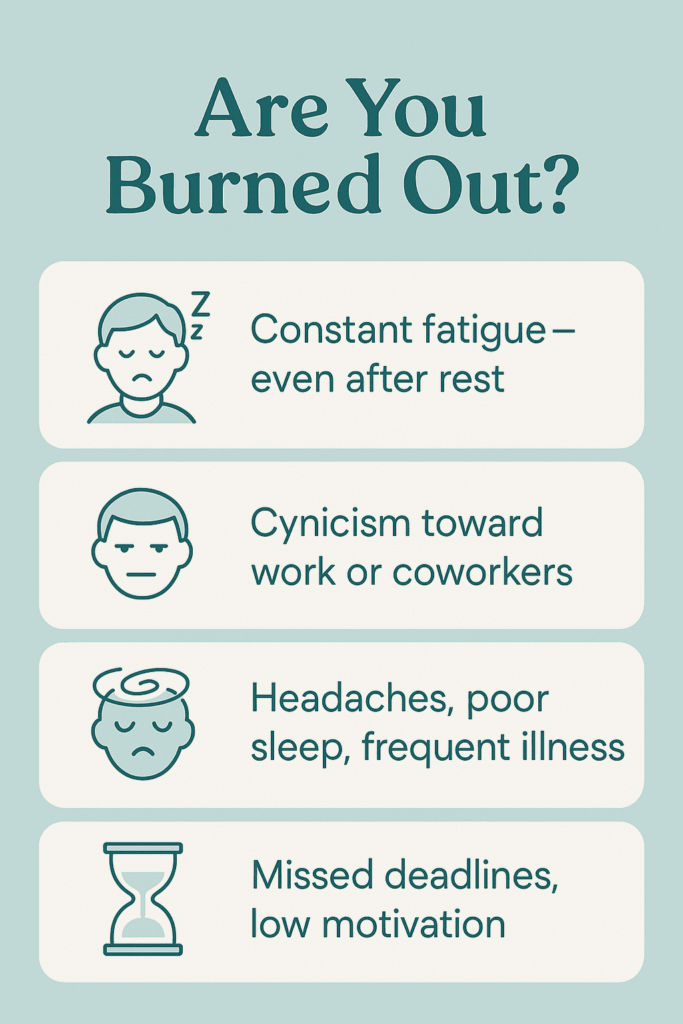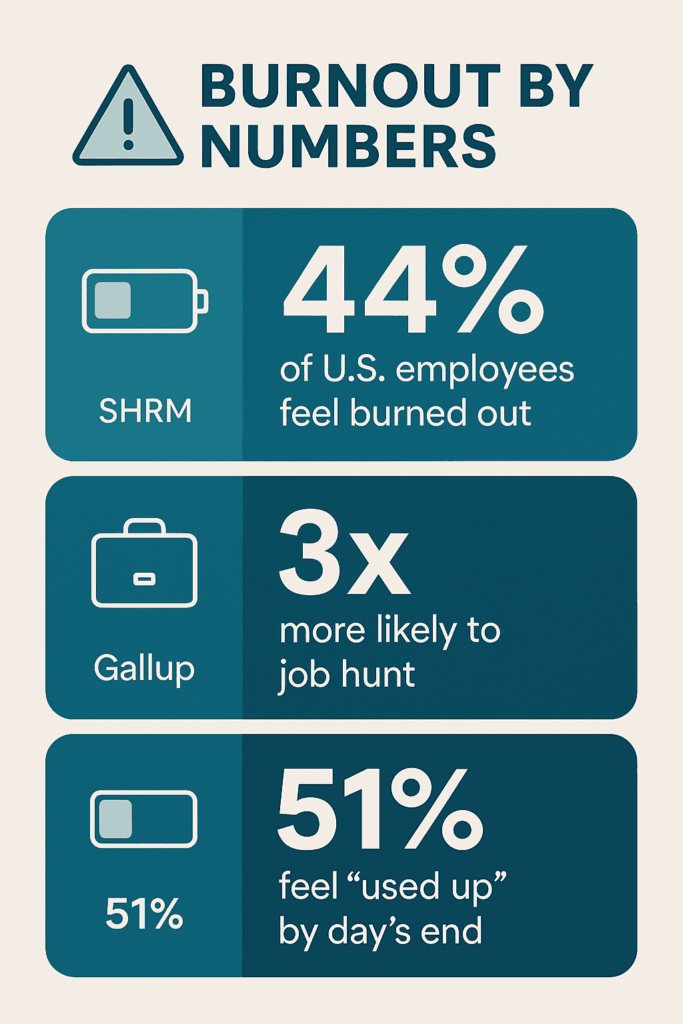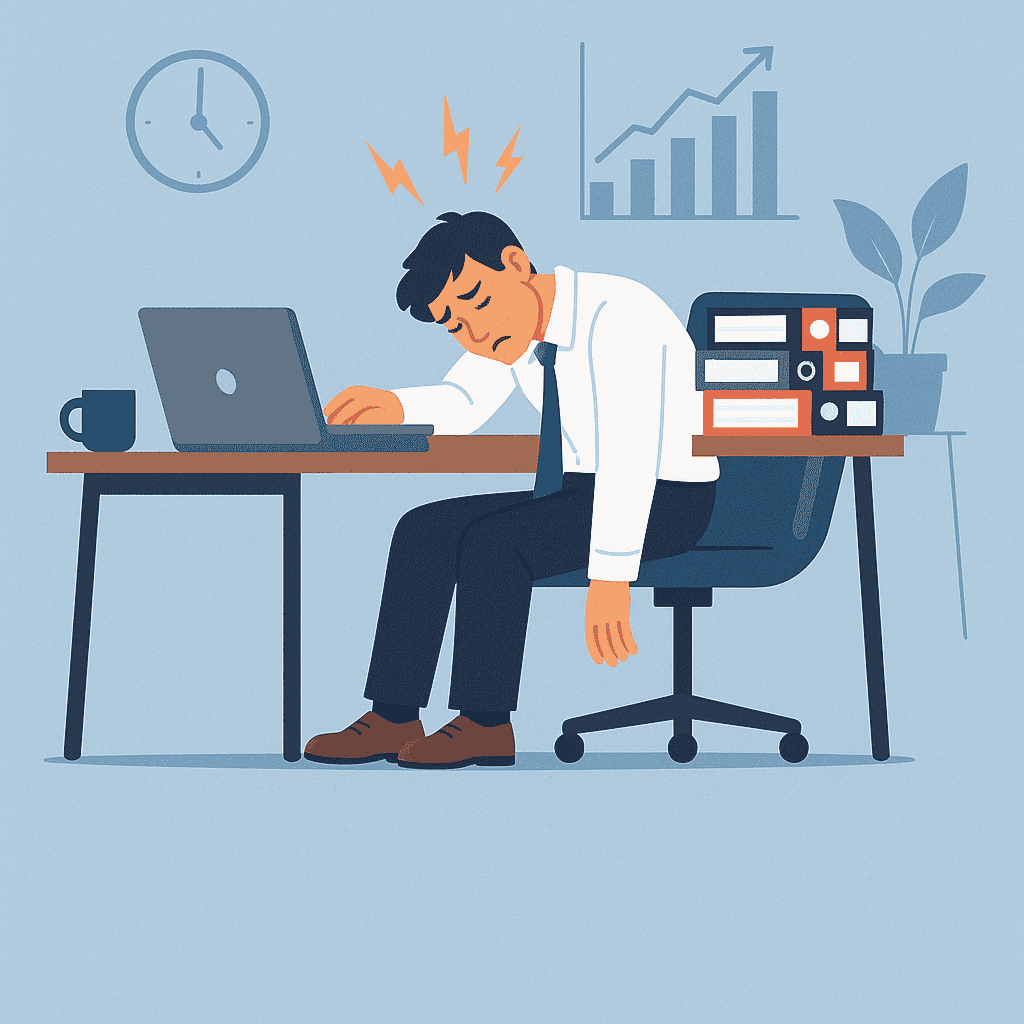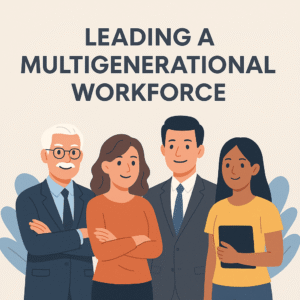Burnout isn’t just about being tired—it’s about being chronically drained, disconnected, and done. This article focuses on strategies to help Avoid Burnout at Work.
According to the Society for Human Resource Management, 44% of U.S. employees feel burned out. 51% say they feel “used up” by the end of the workday. This isn’t just a personal problem—it’s a workplace one.
What Burnout Really Looks Like
Burnout is more than stress. It shows up as:
-
Emotional exhaustion
-
Cynicism or detachment
-
Feeling ineffective or unproductive
It’s officially recognized by the World Health Organization as a result of chronic workplace stress that hasn’t been managed. Left unchecked, it leads to health issues, low morale, and turnover.
Burnout vs. Stress: Know the Difference
Stress = short-term pressure.
Burnout = long-term depletion.
A stressed employee pushes through. A burned-out one checks out.
Why Leaders Should Care
Burned-out employees are 3x more likely to job hunt and 2.6x more likely to call in sick.
Companies that invest in well-being perform better financially.
Early Warning Signs
-
Constant fatigue, even after rest
-
Cynicism toward work or coworkers
-
Headaches, poor sleep, or frequent illness
-
Procrastination and declining performance
If your inner monologue sounds like “What’s the point?”—pay attention. That’s burnout talking.

Top Causes of Burnout (And How to Spot Them)
Burnout isn’t about laziness or lack of ambition. It’s usually tied to:
-
Unmanageable workload
-
Lack of support or clear expectations
-
Poor communication
-
Constant time pressure
-
Misaligned values
-
Micromanagement or lack of autonomy
If people feel undervalued and overextended, burnout is right around the corner.
How to Prevent Burnout (For You and Your Team)
If You’re an Individual:
-
Set boundaries. Protect your off-hours.
-
Use your calendar wisely. Block breaks—not just meetings.
-
Prioritize rest. Sleep, move, unplug. Repeat.
-
Speak up. Burnout thrives in silence.
-
Reconnect with purpose. What part of your job brings you energy?
Recovery starts when you stop pretending you’re fine.
If You’re a Leader:
-
Offer flexibility. People need room to manage life and work.
-
Normalize mental health support. EAPs, mental health days, open convos.
-
Respect work hours. PTO should be actual time off.
-
Recognize effort. People want to feel seen and valued.
-
Train your managers. They’re the front line of burnout prevention.

Recovering from Burnout
Burnout is real—but it’s reversible.
Start here:
-
Acknowledge it without guilt.
-
Take a real break. Unplug. Fully.
-
Rebalance your workload. Say no. Delegate.
-
Recover intentionally. Sleep, move, connect.
-
Reignite your purpose. Find the “why” again.
Final Thought
Burnout doesn’t happen overnight—and recovery won’t either. But it starts with awareness, boundaries, and a willingness to ask: Is this sustainable?
Burnout isn’t weakness. It’s a signal. Pay attention.






